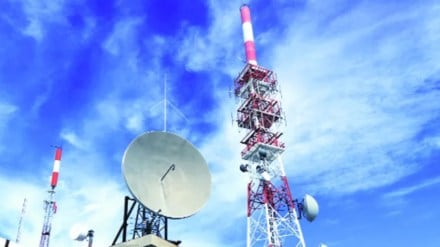By TV Ramachandran
Years ago, a German philosopher said that constant prevarication is not merely aimed at making targets believe the untruth but, far more dangerously, the goal is to ensuring no one believes anything anymore. The targets become like putty or clay in the hands of the untruth propagandists who can do whatever they want with them. Most scary indeed. Seeing the flood of public statements from a section of Indian telecom, one is convinced that some vested interests here are practitioners par excellence in this approach. From persistent calls to auction spectrum for even the public required use cases to the suppression of Wi-Fi innovation, such vested interests are innovatively peddling misleading claims to achieve their commercial agendas.
Take the curious case of the 6 GHz spectrum band, which the major telcos are clamouring to be auctioned, touting its supposed value for 5G, 5.5G, and even 6G services. This claim glosses over the purpose of delicensed 6 GHz band: to fuel innovation, broaden access, and enable broadband for all. Over 80 countries have delicensed this spectrum and our telcos’ short-sightedness in pushing for auction of this critical public resource overlooks the socio-economic benefits of delicensing the entire 6 GHz spectrum, especially for the proliferation of broadband through affordable and modern Wi-Fi. Unrestricted access to the delicensed 6 GHz band could bring many benefits, from powering digital classrooms to supporting small businesses. Importantly, using 6 GHz for IMT implies overwhelming reliance on non-trusted source/country.
Another public resource which keeps getting caught in the cross hairs of auction advocacy is the satellite spectrum, despite clear provisions for administrative allocation in the Telecom Act. Such allocation is necessary to enable growth of the nascent satcom market, and provision of broadband to the unserved and remote areas. Telcos and satcom are chalk and cheese in terms of technologies, networks, and revenue potential. The telco Goliath of the Rs 3 lakh crore is seeking to swallow the Rs 500 crore David of satcom!
Even more intriguing is the case of the globally unique, prestigiously branded, and indigenously developed Prime Minister’s Wi-Fi Access Network Interface (PM-WANI) scheme that could change India’s connectivity landscape by offering secure, easy-to-use, affordable public Wi-Fi hotspots. Yet, telcos have dismissed PM-WANI by terming it “irrelevant” to India’s vision of Broadband for All. Public Wi-Fi is complementary to mobile broadband, but the latter, riding on the power of monopoly and deep pockets, conveniently ignores the technical limitations on capacity, reliability, and consistency of mobile networks. Despite strong support from the Telecom Regulatory Authority of India and the government, PM-WANI has been stalled thanks to a powerful lobby that would rather see it disappear than challenge their dominance.
Among the most brazen cash-grabbing attempts of telcos is their dubious demand of “fair share” in revenues of the so-called large traffic generators (LTGs), the over-the-top (OTT) platforms. They allege that LTGs burden their networks, necessitating additional infrastructure while completely disregarding that OTT platforms have enabled them to efficiently utlilise their underutilised capacities. This demand for compensation defies logic — after all, this traffic is generated from the requests of their own customers who pay consideration for respective data usage according to the prescribed tariffs.
Private 5G, the new frontier in enterprise technology, has also fallen prey to misinformation. Telecom companies claim they alone are suited to provide private 5G networks, dismissing direct spectrum allocation to enterprises as a supposed “revenue loss” to the exchequer, and raising concerns over potential misuse. In reality, telcos do not have exclusive licences and direct spectrum allocation to enterprises to set up private networks at nominal fees would follow global norms, creating an avenue for atmanirbharta (self-reliance) across critical sectors like manufacturing, healthcare, and transportation.
Equally concerning is the misleading portrayal of 5G fixed wireless access (FWA) as a “new paradigm” for fixed broadband, with some even heralding it as a substitute for true fixed (fiber) broadband. FWA is only a mobile service that works on the principle of best efforts data service and not on guaranteed data service provided with fiber-based fixed broadband. Though a useful interim solution, it is nothing but a modern avatar of WLL-M (wireless in local loop-mobile) and is no match for the sustainability, speed, and reliability of fiber-to-the-premises (FTTP). This “alternative fact” leads to a bumpy growth path for crucial fiber expansion efforts that promise long-term stable and scalable connectivity.
In their relentless pursuit of profit, certain sections of the telecom sector want to capture every aspect of digital connectivity albeit at the cost of public good. Consumers of Indian telecom, beware of a tsunami of “alternative facts” engulfing you but don’t lose hope. Stay tuned to evidence-based propositions and solutions. Competition and consumer choice will demolish the distortions created to delay India’s digital leap.
The author is President, Broadband India Forum
With research inputs by Debashish Bhattacharya and Shubhika Saluja, respectively senior deputy director-general and research associate, BIF
Views are personal
